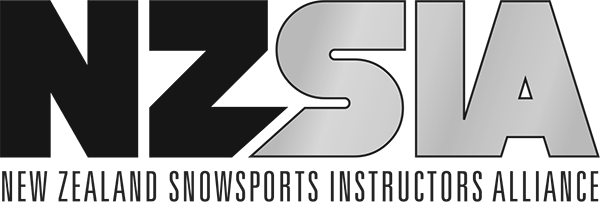The Indoor Lecture
Have you even taught a lesson and caught yourself rambling on and on? Your students were either thinking about what they want for lunch, pretending to listen out of respect. The Swiss indoor and on-snow presentations want to draw attention to these three key questions:
- What kind of teacher behaviour is beneficial to learners making progress?
- Which teaching methods are effective?
- How can I make the greatest individual progress possible for the learners through feedback and exercises?
Keeping the explanations simple… Isa showed us that a wordy and complicated explanation triggers the same response in the brain that lights up when the person experiences pain. Noted!
As the rider moves through their ability levels, they will show certain qualities that show a skill level ranging from beginner to advanced. The graph below was their way of showing what can and cannot be measured when it comes to progress with a snowboarders development:

Simply put, their Performance Model shows our physical and mental energy and how it needs to be controlled.

As the instructor builds a progression, they will need to take into consideration the following:

No matter how much the material content of the lesson and different situations on the mountain change, the social aspect will always remain. This shows some resemblance to our Safety-Fun-Achievement model in the sense that each of these zones may grow and shrink depending on the needs or environment of the group.
They handed out a “Best Practice” booklet which helped guide their instructors, much like our FUNdamentals program for NZL schools. The booklet however had a variety of examples on what to introduce at different levels to challenge the learners from beginner to expert and onto competition.
On snow presentation
The Swiss flag was flying and the snowboarders knew that they had to be on time!
Around 22 riders attended the clinic organised by Isa Jud and run by her team Philipp Beyeler, Samuel Gave and Tobias Imhof. Their topic was simple; put into action their theory from last night’s indoor presentation and learn a new trick!
Named after a good Swiss friend, the Harry is an explosive and challenging ground trick which each of the Swiss teams proudly taught us.

Sam busts out “The Harry” on a park knuckle
It involves a powerful counter-rotation movement and a backside shifty over the nose. For inspiration, Sam spared no time in taking us straight into the run where he showed us the Harry. It was important for the Swiss to get the group moving and show the trick as soon as possible, then go about explaining the technical details and the feelings/sensations that go with it.
The explanations were full of analogies and Sam was keen to hear what we thought the movement pattern was similar to. The Harry reminded me of a front-side boardslide and also similar to the position when releasing a ball in ten-pin bowling. It helped! Other analogies were throwing your arms forward on completion like Superman down the slope and kicking the rear foot upwards.
Specifics around where on the board we intended to slide were fine-tuned, targeting this to an area where the effective edge starts on the toeside and the feelings in the boots where we were to feel the most.
After giving us plenty of time to pair up and try variations to the trick – some Harrys were held longer than others – we found ourselves in the park. The goal here was to train over the tables of each jump and target the snow between the jump and the knuckle for the trick. Made for a pretty sweet video which naturally Stoked us. The result here was for the Swiss to highlight how important the people and the social aspects of the progressions are. It is more fun when pairing up, just like the reciprocal learning in the SBINZ system.
Our Reflections
Both the indoor and on snow presentations highlighted the importance of body movements and outcomes on the snowboard. To describe these they broke the movements down to:
- Bend and Stretch
- Rotation
- Inclination and Angulation
The Swiss outcomes are:
- Pressure build and release
- Pivoting
- Sliding flat and edging
This shows many similarities to the SBINZ Methodology, which demonstrates how similar our two systems actually are:
- Rotation, Lateral, Longitudinal & Vertical
- Edge – Pressure – Steer / Spin
Finally, it was great to see them embrace the tool of video on the snow. They have their candidates use their cell phones to follow-cam each other performing tasks for instant analysis and feedback. Particularly useful when showing the timing of movements during the take-off in a spin or flexion movements during a down-unweighted turn.
– By Richie Johnston
Richie is now shadowing the Swiss Snowsports Snowboard Level Three prep in Davos, Switzerland. Keep your eyes peeled for an update on how that goes.
